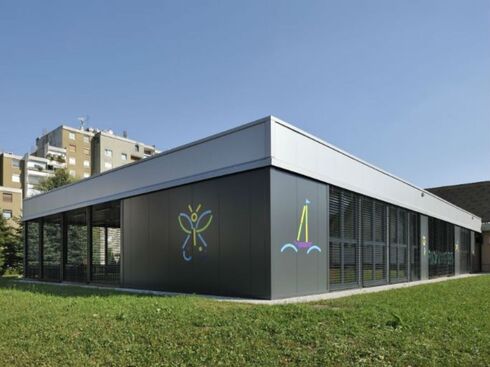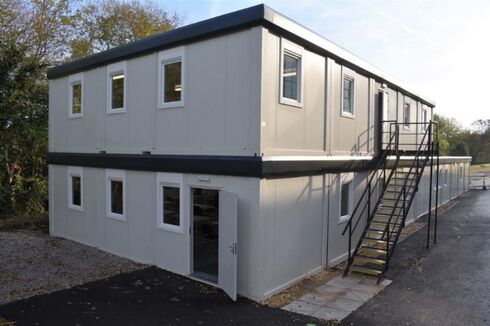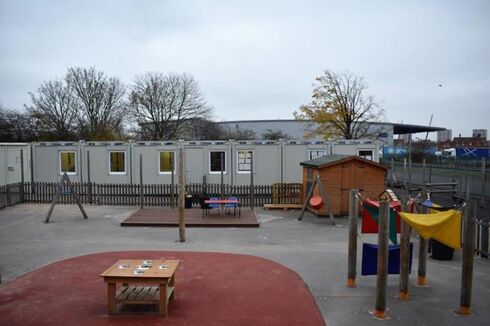
Modular methods
21 August 2020

My secondary school had 29 classrooms, but numbers 26 to 29 were different from the others. They were called The Huts.
They weren’t part of the main brick building but they stood reasonably close by at the edge of the site. Sometimes you got wet going to and fro, but a plus-point was that they had good views across the playing field to surrounding woodland when your attention wandered.
These were pre-fabricated buildings - or pre-fabs - erected to accommodate rising pupil numbers. They were commonplace and were used not just for schools or workplaces, but also for houses.
Quickly and cost-effectively
Some 156,623 such buildings were erected all over the UK between 1946-8 to re-house ex-servicemen and their families from WW2, or bombed-out people. They could be mass-produced quickly and cost-effectively.
They wouldn’t have won design awards but that wasn’t the point. They were structurally sound, serviceable and lasted for considerably longer than their expected lifespan.
Since then, of course, techniques have been much refined and designs enhanced. The process is now more usually called modular construction, and it has been attracting much attention as an efficient building technique.
Off-site production
The structures - such as the classroom facility pictured above, which was built by Pickerings - are typically made off-site and produced in modules. They are then moved or craned into position and effectively joined together.
Amongst the claimed benefits are faster production and shorter project times, as the on-site work is less prone to the vagaries of the British climate.
However, interest has been growing because of other factors. Modular construction is regarded as being inherently greener, since factory production can reduce waste, lowering a project’s carbon footprint. Energy efficiency can also be determined during production.
Construction 2025 strategy
In 2013 the government produced its Construction 2025 strategy giving several targets to be achieved by that year. These included a 33% reduction in whole life costs, 50% faster delivery and 50% lower emissions. Modular construction was seen as a significant contributor towards these aspirations.
Indeed, during a visit to a modular buildings factory in Leeds last January, the former Housing Minister Esther McVey said: “I want the UK to become a world leader in modular houses within the next ten years.”
Techniques have been refined and enhanced over the years, and are popular for applications as diverse as classrooms, offices, canteens, hotels, custodial facilities, laboratories and canteens. They have also been used for extra NHS services in the Covid-19 response.
“Build back greener”
In his much-touted ‘build, build, build’ speech back on 30 June, the Prime Minister spoke of his aspiration to “build back better, build back greener, build back faster and to do that at the pace that this moment requires.”
He announced that the government would bring forward £5bn of capital investment projects, including: £1.5bn this year for enabling hospital building and improving A&E capacity; over £1bn to fund the first 50 projects of a new, ten-year school rebuilding programme; £560m and £200m for repairs and upgrades to schools and FE colleges respectively this year; £142m for digital upgrades and maintenance to around 100 courts this year; £83m for maintenance of prisons and youth offender facilities; and £60m for temporary prison places, creating thousands of new jobs.
Indeed, the modular construction approach will be used for building four new prisons in England over the next six years. Chief Secretary to the Treasury, Stephen Barclay, has said this signals “a shift in how we build public buildings through a major increase in factory built, modern methods of construction.”
Hire opportunities
So, what might be the implications for hire if modular construction is used more widely? In one sense, the opportunities for hiring tools and equipment for on-site use are fewer than with conventional building practices, as many of the structural components are factory produced by machines.
However, plant such as excavators and dumpers will be needed to clear ground prior to on-site assembly, along with telescopic handlers, scissor lifts and cranes during the installation processes.
It’s important to see modular construction as complementing existing methods rather than replacing them. More individual or bespoke developments will continue to be designed and built in traditional ways, as well as many of those in settings with difficult access.
Manufacturers and installers
Nevertheless, modular construction could bring some hire opportunities. Craig Wheldale, Group Hire Manager at Frank Key Plant & Tool Hire, told me that the company supplies equipment to several manufacturers and installers of such facilities, both in factories and on sites.
“We supply items such as material lifts, chain blocks, scissor lifts and fixing tools for the installation of modular facilities like police stations, extra hospital buildings and railway platforms,” he said. “We have provided cabinet heaters for use in the production facilities. There can also be a need for scaffold towers and ladders during the manufacture of some designs.”
One thing’s for sure: these structures have come a long way since the days of my old school and classrooms 26 to 29.
(Photos: Pickerings)



